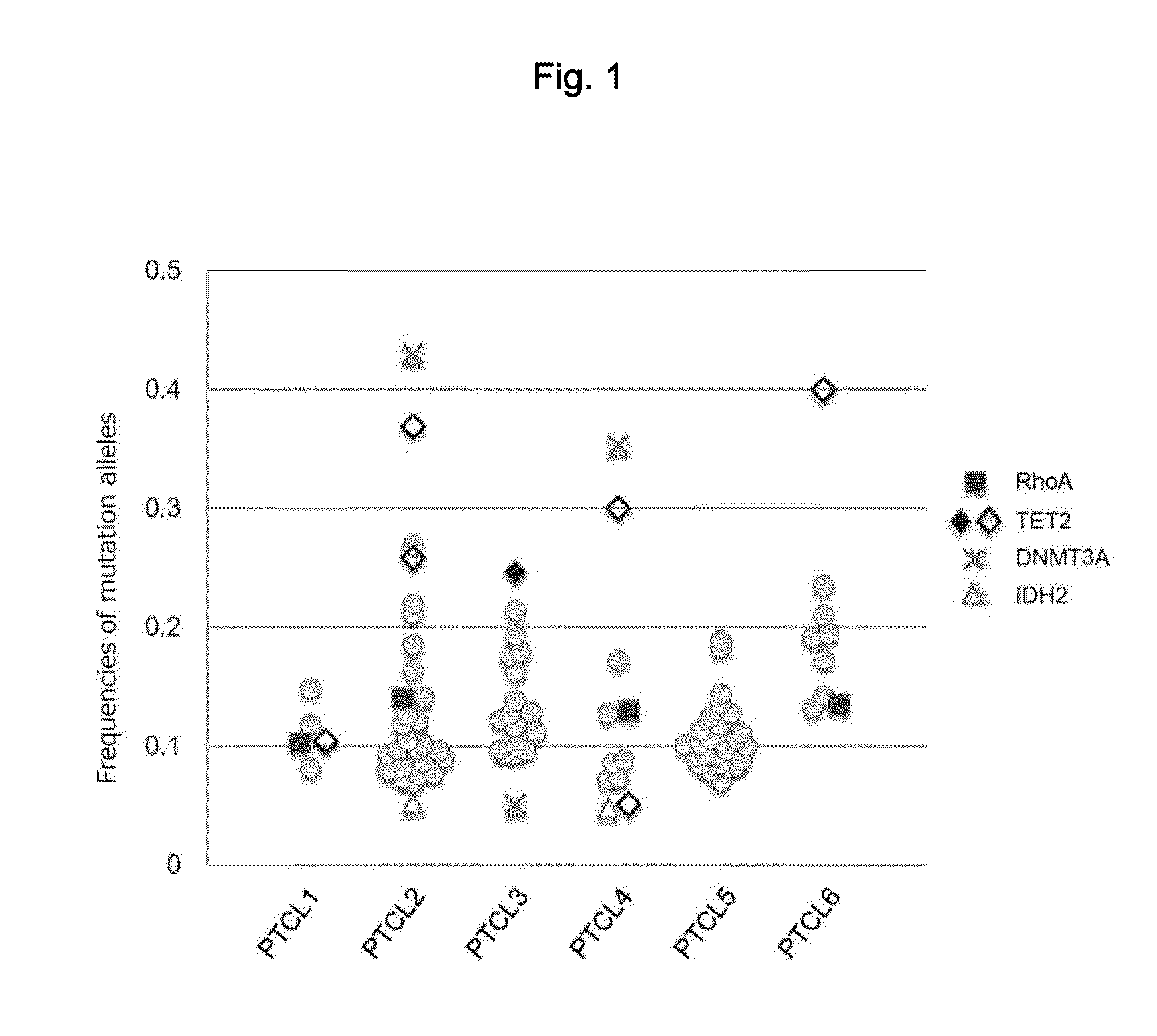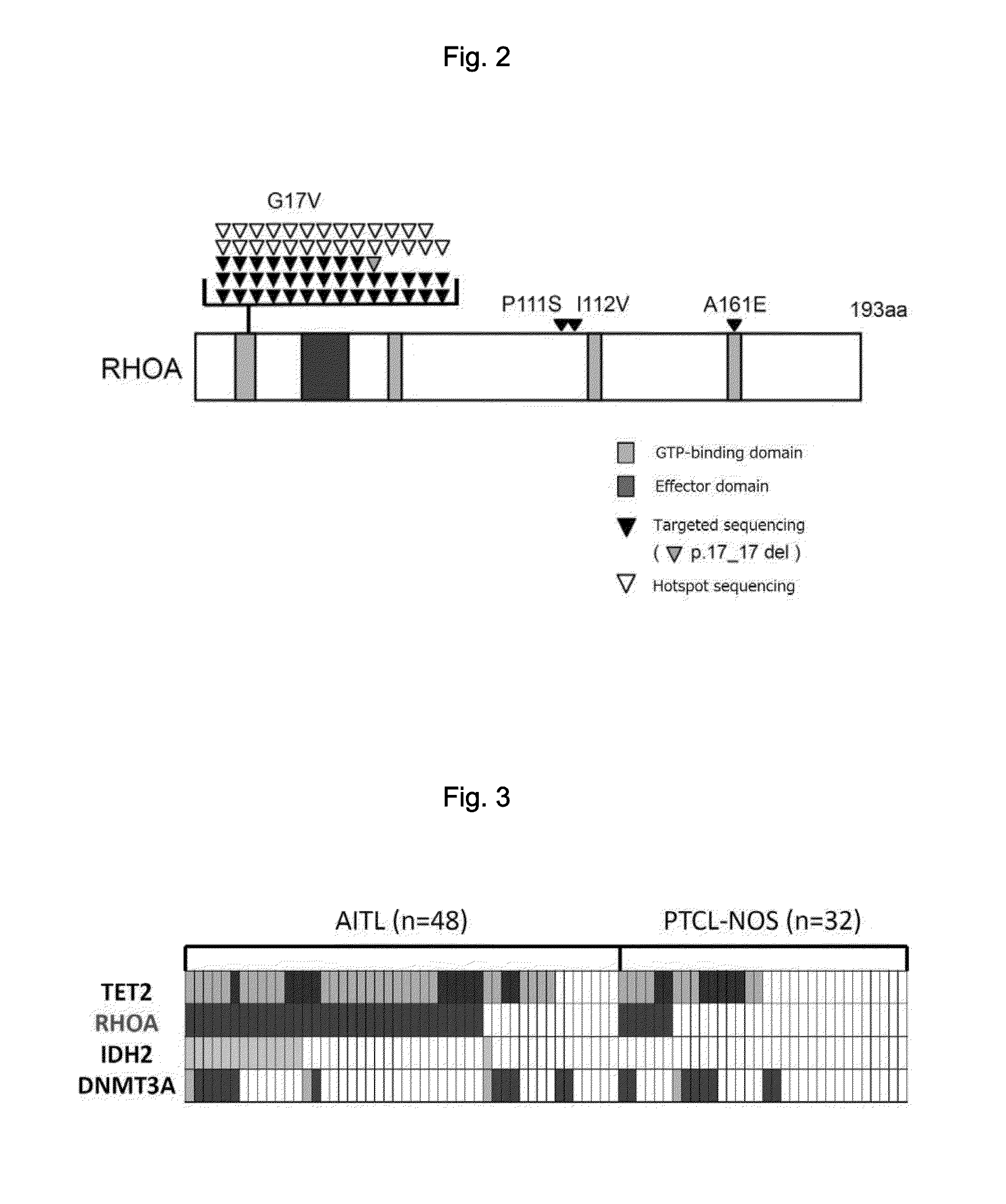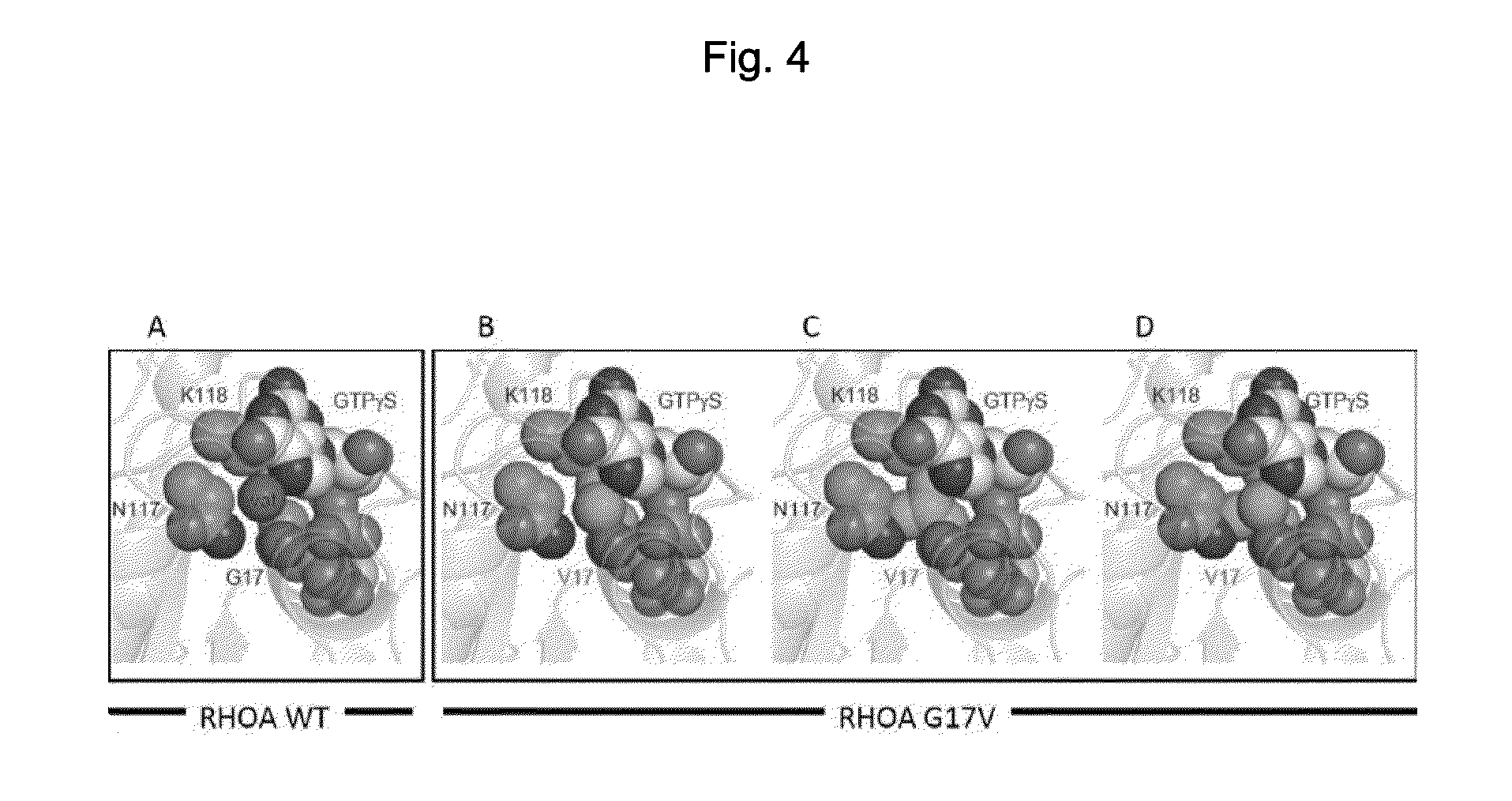Method for detecting t-cell lymphoma
a lymphoma and lymphoma technology, applied in the field of detecting a t-cell lymphoma, can solve the problems of difficult to distinguish aitl from other lymphomas such as b-cell lymphomas, and the rearrangement of tcr may not be detected in aitl, so as to achieve convenient and reliable detection or diagnosis.
- Summary
- Abstract
- Description
- Claims
- Application Information
AI Technical Summary
Benefits of technology
Problems solved by technology
Method used
Image
Examples
example 1
[0083]1. Summary
[0084]According to this example, 3 AITL cases and 3 PTCL-NOS cases were analyzed by whole-exome sequencing method (WES). With respect to the entire regions of RHOA gene that was found to have mutations by WES as well as TET2, IDH1 / 2 and DNMT3A genes which had been reported of their highly frequent mutations, 80 cases were analyzed by targeted sequencing method. Furthermore, with respect to the highly frequent mutated site of RHOA, 78 cases were analyzed by hotspot sequencing method. Thus, a total of 158 cases were analyzed. WES revealed somatic mutations of RHOA gene for 3 AITL cases and 1 PTCL-NOS case, where all of the mutations were those that would result G17V substitution in the amino acid sequence.
[0085]Additional analysis was performed for more number of cases. As a result, mutations were found in 71.2% of RHOA, 85.4% of TET2, 29.2% of IDH2 and 29.2% of DNMT3A for AITL while mutations were found in 16.5% of RHOA, 50.0% of TET2, 0% of IDH2 and 28.1% of DNMT3A f...
PUM
| Property | Measurement | Unit |
|---|---|---|
| Length | aaaaa | aaaaa |
| Length | aaaaa | aaaaa |
| Length | aaaaa | aaaaa |
Abstract
Description
Claims
Application Information
 Login to View More
Login to View More - R&D
- Intellectual Property
- Life Sciences
- Materials
- Tech Scout
- Unparalleled Data Quality
- Higher Quality Content
- 60% Fewer Hallucinations
Browse by: Latest US Patents, China's latest patents, Technical Efficacy Thesaurus, Application Domain, Technology Topic, Popular Technical Reports.
© 2025 PatSnap. All rights reserved.Legal|Privacy policy|Modern Slavery Act Transparency Statement|Sitemap|About US| Contact US: help@patsnap.com



